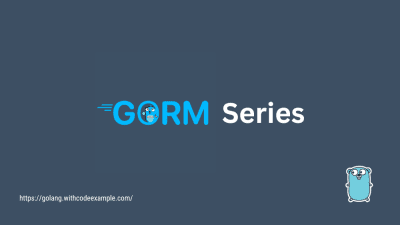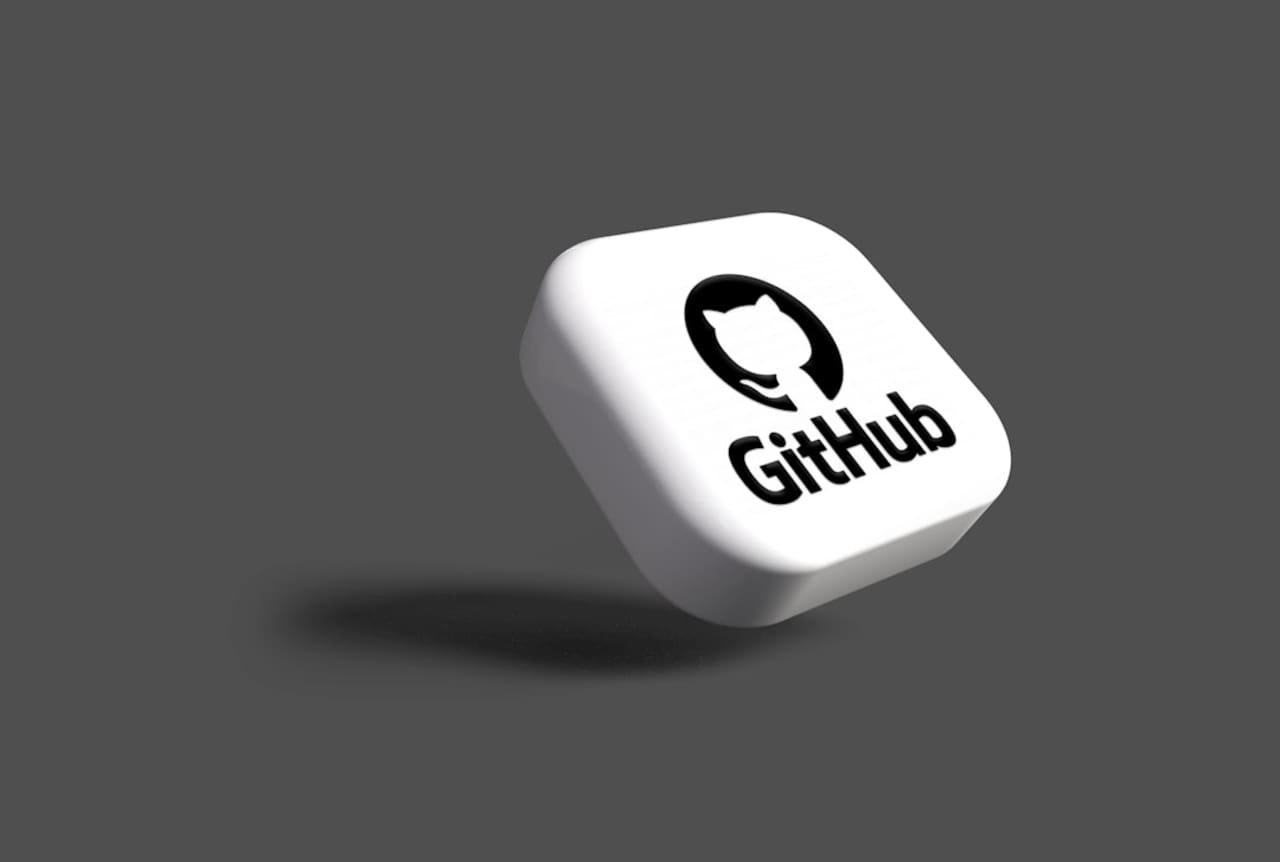Advanced Techniques for Code Optimization in Go
- With Code Example
- December 28, 2023
Unveiling Advanced Techniques for Boosting Go Application Performance
Go, also known as Golang, is celebrated for its simplicity, readability, and efficiency. While the language itself encourages clean and idiomatic code, there are various advanced techniques and best practices that can significantly enhance the performance of your Go applications. In this in-depth guide, we will explore key strategies for optimizing Go code, covering a range of aspects from profiling to HTTP server optimization.

Explore the intricacies of Go programming as we unearth cutting-edge methods and recommended practices to enhance your apps. This tutorial is your key to unlocking the full potential of Go, from profiling for performance bottlenecks to using parallelism, memory pooling, benchmarking, and effective caching solutions. Use these crucial optimisation strategies to improve the speed, efficiency, and responsiveness of your apps and to further your coding skills.
1. Profiling
In the language of Go, profiling is the process of examining a program’s performance and behaviour during runtime. Through profiling, developers may find hotspots, bottlenecks, and inefficiencies in their code and implement well-informed optimisations. Through the net/http/pprof package, Go comes with an integrated profiling tool that lets you gather and examine several kinds of profiling data, such as CPU and memory profiling.
Here’s an example to help you understand how to profile in Go:
CPU Profiling in Go:
CPU profiling provides insights into how much time your program spends executing each function, helping you identify functions that consume the most CPU time.
Example:
package main
import (
_ "net/http/pprof"
"net/http"
"time"
)
func expensiveOperation() {
// Simulate a time-consuming operation
for i := 0; i < 100000000; i++ {
_ = i
}
}
func main() {
// Start the HTTP server for profiling
go func() {
http.ListenAndServe("localhost:6060", nil)
}()
// Profile the CPU usage
go func() {
for {
// Start CPU profiling
startTime := time.Now()
pprof.StartCPUProfile()
// Run your application code
expensiveOperation()
// Stop CPU profiling
pprof.StopCPUProfile()
elapsedTime := time.Since(startTime)
fmt.Printf("CPU profiling took %s\n", elapsedTime)
time.Sleep(5 * time.Second) // Run profiling every 5 seconds (adjust as needed)
}
}()
// Your application code here
select {}
}
In this example, we start an HTTP server on localhost:6060 to expose profiling endpoints. We then launch a Goroutine to perform CPU profiling periodically by starting and stopping the CPU profiler. The expensiveOperation function is used to simulate a CPU-intensive task.
To access the profiling data, run your program and navigate to http://localhost:6060/debug/pprof/ in your browser. You can generate a CPU profile by clicking on the “CPU” link. Analyzing this profile can help you understand which functions consume the most CPU time.
Memory Profiling in Go:
Memory profiling helps you analyze how your program uses memory, identifying memory allocations and potential leaks.
Example:
package main
import (
_ "net/http/pprof"
"net/http"
"runtime/pprof"
"time"
)
func allocateMemory() {
// Simulate a memory allocation
_ = make([]byte, 1024*1024)
}
func main() {
// Start the HTTP server for profiling
go func() {
http.ListenAndServe("localhost:6060", nil)
}()
// Profile memory usage
go func() {
for {
// Start memory profiling
memFile, _ := os.Create("memory_profile.prof")
pprof.WriteHeapProfile(memFile)
memFile.Close()
// Run your application code
allocateMemory()
time.Sleep(5 * time.Second) // Run profiling every 5 seconds (adjust as needed)
}
}()
// Your application code here
select {}
}
In this example, we periodically write heap profiles to a file. The allocateMemory function simulates a memory allocation. To access the memory profile, run your program, trigger memory-intensive tasks, and then generate a memory profile using the go tool pprof command:
go tool pprof memory_profile.prof
Profiling in Go is a powerful tool for understanding the runtime behavior of your applications. It helps you pinpoint performance bottlenecks, optimize critical sections of your code, and ensure that your application meets the required performance standards.
Concurrency
Concurrency in Go is a powerful feature that allows you to execute multiple tasks concurrently, making efficient use of available resources. Go’s concurrency model is built around Goroutines and Channels, providing a simple and expressive way to write concurrent programs.
Goroutines :
Goroutines are lightweight threads of execution in Go. They are managed by the Go runtime and are more efficient than traditional threads. Goroutines make it easy to write concurrent code without the complexity of manual thread management.
Channels :
Channels are communication primitives that allow Goroutines to communicate and synchronize their execution. Channels facilitate safe data sharing between Goroutines and help avoid race conditions.
Now, let’s dive into a simple example to illustrate concurrency in Go:
package main
import (
"fmt"
"sync"
"time"
)
func printNumbers(wg *sync.WaitGroup, ch chan int) {
defer wg.Done()
for i := 0; i < 5; i++ {
ch <- i // Send value to the channel
time.Sleep(time.Millisecond * 500)
}
close(ch) // Close the channel to signal that no more values will be sent
}
func main() {
var wg sync.WaitGroup
ch := make(chan int)
// Start a Goroutine to print numbers concurrently
wg.Add(1)
go printNumbers(&wg, ch)
// Start another Goroutine to process the numbers concurrently
wg.Add(1)
go func(wg *sync.WaitGroup, ch chan int) {
defer wg.Done()
// Receive values from the channel until it's closed
for num := range ch {
fmt.Println("Received:", num)
}
}(wg, ch)
// Wait for both Goroutines to finish
wg.Wait()
}
In this example, we have two Goroutines:
printNumbersGoroutine: It sends numbers to the channelchevery 500 milliseconds.Anonymous Goroutine: It receives numbers from the channel
chand prints them.
The sync.WaitGroup is used to wait for both Goroutines to finish. The main function creates a channel and launches both Goroutines concurrently. The second Goroutine processes the numbers as soon as they are received from the channel.
The use of channels ensures safe communication between Goroutines. When the printNumbers Goroutine is done sending values, it closes the channel using close(ch). The second Goroutine, which is listening to the channel, knows that no more values will be sent when the channel is closed.
This is a simple example, but it demonstrates the power of concurrency in Go. Goroutines and channels make it easy to write concurrent code that is safe, efficient, and expressive. They are key components of Go’s approach to concurrent programming.
Memory Pooling
Memory pooling is a technique used to manage and reuse memory allocations in a way that reduces the overhead of allocating and deallocating memory. In Go, memory pooling is often implemented using the sync.Pool package, which provides a simple and effective way to reuse objects and reduce the load on the garbage collector.
Why Use Memory Pooling?
Memory allocation and deallocation can be a relatively expensive operation, especially in situations where many short-lived objects are created and discarded. Allocating memory involves finding a contiguous block of memory, initializing it, and managing bookkeeping information. When the memory is no longer needed, deallocating it requires updating data structures and marking the memory as available.
Memory pooling aims to mitigate these costs by reusing previously allocated objects. Instead of creating new objects and deallocating them when done, a pool of pre-allocated objects is maintained. Objects are retrieved from the pool when needed and returned to the pool when no longer in use. This reduces the pressure on the garbage collector and can improve the overall performance of the program.
Using sync.Pool for Memory Pooling in Go:
The sync.Pool package in Go provides a simple interface for implementing memory pooling. It is part of the standard library and is specifically designed for scenarios where short-lived objects are frequently created and discarded.
Here’s an example of using sync.Pool for memory pooling:
package main
import (
"fmt"
"sync"
)
// Object represents an object that will be pooled.
type Object struct {
ID int
// Other fields...
}
func main() {
// Create a new pool with a New function that creates objects.
objectPool := &sync.Pool{
New: func() interface{} {
return &Object{}
},
}
// Acquire an object from the pool.
obj1 := objectPool.Get().(*Object)
obj1.ID = 1
// Use the object...
fmt.Println("Object ID:", obj1.ID)
// Release the object back to the pool.
objectPool.Put(obj1)
// Acquire another object from the pool.
obj2 := objectPool.Get().(*Object)
fmt.Println("Object ID:", obj2.ID)
// Important: Do not rely on the object's state between Put and Get.
// The state of an object obtained from the pool is not guaranteed.
}
In this example:
We create a pool using
sync.Poolwith aNewfunction that returns a new object.We acquire an object from the pool using
Get(). If the pool has an available object, it will be returned; otherwise, a new object will be created.We use the acquired object for some purpose.
We release the object back to the pool using
Put()when we are done with it. This marks the object as available for reuse.We can then acquire the same or another object from the pool again.
Important Note: The state of an object obtained from the pool is not guaranteed between Put and Get operations. If your object has mutable state, make sure to initialize it properly after acquiring it from the pool.
Using sync.Pool in this way helps reduce the overhead of memory allocation and deallocation, especially in scenarios where objects are short-lived and created frequently. It is important to assess the specific requirements and characteristics of your application to determine whether memory pooling is beneficial in your particular use case.
Benchmarking
Benchmarking in Go involves evaluating the performance of specific code segments or functions to measure their execution time under controlled conditions. The Go testing package provides a built-in mechanism for writing and running benchmarks. Benchmarks help developers identify performance bottlenecks, compare different implementations, and ensure that optimizations have the desired impact.
Here’s a step-by-step guide on how to write and run benchmarks in Go:
1. Writing a Benchmark Function:
In your test file (with a _test.go suffix), create a function starting with Benchmark followed by a meaningful name. Use the *testing.B parameter to control the benchmarking process.
package mypackage
import (
"testing"
)
func BenchmarkMyFunction(b *testing.B) {
for i := 0; i < b.N; i++ {
// Your code to benchmark here
}
}
2. Running Benchmarks:
To run benchmarks, use the go test command with the -bench flag followed by a regular expression that matches the benchmark functions’ names.
go test -bench .
3. Analyzing Benchmark Results:
After running benchmarks, Go provides detailed output, including the number of iterations (N), the total time taken, and the average time per operation. The results help you assess the performance of your code.
Here’s an extended example to illustrate benchmarking:
package main
import (
"testing"
)
// Function to benchmark
func add(a, b int) int {
return a + b
}
// Benchmark function
func BenchmarkAdd(b *testing.B) {
// Run the function b.N times
for i := 0; i < b.N; i++ {
add(10, 20)
}
}
When you run this benchmark using go test -bench ., you’ll get output similar to the following:
BenchmarkAdd-8 1000000000 0.631 ns/op
Here, BenchmarkAdd-8 indicates that the benchmark function is running on 8 parallel goroutines (which is the default value). The result 0.631 ns/op represents the average time taken per operation.
Benchmarking Tips:
Use a Representative Workload: Ensure that the workload in your benchmark is representative of the typical usage of your code.
Avoid I/O in Benchmarks: Focus on CPU-bound tasks in benchmarks. Performing I/O operations may introduce variability and make it challenging to interpret results.
Run Multiple Times: Run benchmarks multiple times to account for variability. Go’s testing framework automatically adjusts the number of iterations (
b.N) to achieve a reasonable run time.Compare Implementations: Use benchmarks to compare the performance of different implementations of a function or algorithm.
Profile if Necessary: If benchmarks indicate performance concerns, consider using profiling tools like
pprofto analyze and optimize your code further.
Benchmarks are a crucial part of Go development, providing a quantitative basis for performance improvements and ensuring that optimizations do not introduce regressions. Regularly benchmarking your code helps maintain performance standards and identifies areas for potential optimization.
Caching
Caching is a technique used to store and retrieve frequently used data or computed results in a faster-accessible location, reducing the need to perform expensive computations or database queries repeatedly. In Go, caching can be implemented using various strategies, and it often involves storing data in memory for quick retrieval.
Why Use Caching?
Caching is employed to improve the performance and responsiveness of applications by avoiding redundant or time-consuming operations. Common scenarios for caching include:
Frequently Accessed Data: Store data that is frequently accessed or queried to avoid recomputation or repeated database queries.
Expensive Computations: Cache the results of expensive computations to save processing time.
External API Calls: Cache responses from external APIs to reduce latency and improve the application’s responsiveness.
Database Query Results: Cache the results of database queries to minimize the load on the database.
Implementing Caching in Go:
There are several ways to implement caching in Go. Below are examples of two common caching approaches:
1. Using a Map for In-Memory Caching:
package main
import (
"fmt"
"sync"
)
type Cache struct {
mu sync.RWMutex
store map[string]interface{}
}
func NewCache() *Cache {
return &Cache{
store: make(map[string]interface{}),
}
}
func (c *Cache) Get(key string) (interface{}, bool) {
c.mu.RLock()
defer c.mu.RUnlock()
value, exists := c.store[key]
return value, exists
}
func (c *Cache) Set(key string, value interface{}) {
c.mu.Lock()
defer c.mu.Unlock()
c.store[key] = value
}
func main() {
cache := NewCache()
// Example usage
cache.Set("user:123", "John Doe")
if value, exists := cache.Get("user:123"); exists {
fmt.Println("Cached Value:", value)
} else {
fmt.Println("Value not found in cache.")
}
}
In this example, we create a simple in-memory cache using a map. The Get function retrieves a value based on the key, and the Set function stores a key-value pair in the cache.
2. Using the sync.Pool Package:
package main
import (
"fmt"
"sync"
)
type Data struct {
// Define your data structure here
}
var dataPool = sync.Pool{
New: func() interface{} {
return &Data{}
},
}
func main() {
// Example usage
data := dataPool.Get().(*Data)
defer dataPool.Put(data)
// Use the data object...
fmt.Println("Using cached data:", data)
}
In this example, we use the sync.Pool package, which is often employed for object pooling and can serve as a simple cache for reusable objects. The Get function retrieves an object from the pool, and Put returns the object to the pool.
Considerations for Caching:
Cache Expiration: Implement a mechanism for cache expiration to ensure that cached data is refreshed periodically.
Memory Management: Be mindful of memory usage, especially when caching large datasets. Consider eviction policies or limiting cache size.
Concurrency: Implement proper synchronization mechanisms, such as mutexes, when dealing with concurrent access to the cache.
Use Case-Specific Caching Strategies: Choose a caching strategy based on the specific requirements of your application, whether it’s Least Recently Used (LRU), Time-based expiration, or others.
Error Handling: Handle cache misses appropriately, especially in scenarios where missing data needs to be fetched or computed.
Caching is a powerful tool for optimizing performance, but it should be applied judiciously based on the specific needs and characteristics of your application. Regular monitoring and profiling can help assess the effectiveness of caching strategies and identify opportunities for improvement.
Conclusion In the world of Go programming, mastering advanced optimization techniques is crucial for building high-performance applications. This guide has explored profiling, concurrency, memory pooling, benchmarking, and caching, providing a toolkit to boost your Go applications.
Profiling unveils runtime behaviour, aiding in precise optimizations. Concurrency, driven by Goroutines and Channels, unleashes parallelism. Memory pooling with sync.Pool optimizes memory management. Benchmarking quantifies performance, and caching minimizes redundant computations.
By integrating these techniques, you enhance efficiency and gain a deeper understanding of your code. Continuously refine and iterate on optimizations to meet evolving project needs. With this knowledge, create Go applications that not only meet but exceed performance expectations. Happy coding!





